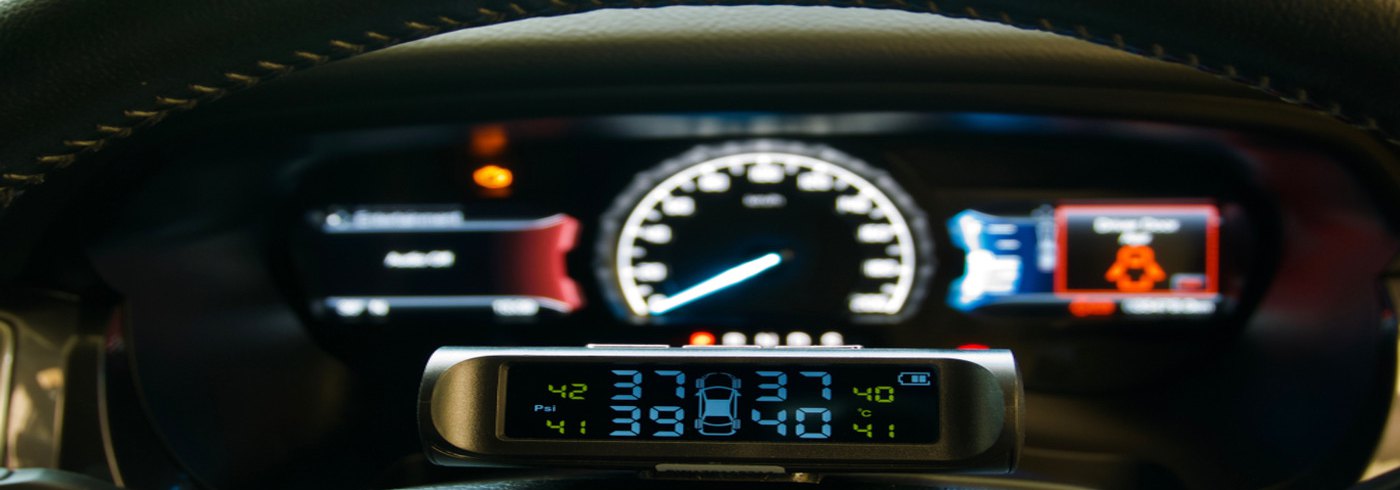
What Is a TPMS Light on Car and How Does It Work?
The TPMS light on car is an essential safety feature to alert drivers of potential tire issues. This innovative technology relies on the TPMS sensor light to constantly monitor tire pressure and notify drivers when it falls below a specified range. If you're wondering what is TPMS mean, you’ve come to the right place. Simply put, it's just an abbreviation for Tire Pressure Monitoring System. TPMS not only enhances overall vehicle performance but also plays a vital role in tire service and maintenance. But what is TPMS in a car, and how does TPMS work? In this article, we'll delve into the inner workings of this crucial system and its role in ensuring a safe and smooth driving experience.
What are the Benefits of TPMS?
The TPMS is more than just a simple warning indicator. When you understand what is the TPMS light, you can appreciate its role in promoting road safety, fuel efficiency, vehicle value, and much more. Here are some key benefits of TPMS:
Road Safety
Tire pressure is adequately maintained thanks to the TPMS light, meaning it is reducing the risk of tire blowouts and ultimately enhancing overall road safety for the passengers.
Increases Fuel Efficiency
Proper tire pressure levels lead to reduced rolling resistance, which translates into better fuel efficiency and cost savings.
Better Insurance Rates
Some insurance companies offer discounts for vehicles equipped with a tire pressure monitoring system, acknowledging the system's role in reducing accidents caused by underinflated tires.
Extends Tire Life
By constantly monitoring tire pressure, TPMS helps drivers maintain optimal inflation, extending the tires' life.
Improves Environmental Safety
Proper tire pressure reduces fuel consumption and emissions.
How Does TPMS Work?
Understanding how TPMS works is crucial to appreciating its role in vehicle safety and performance. The system relies on smart sensor TPMS technology to continuously monitor tire pressure and alert drivers when it deviates from the optimal range. There are two main types of TPMS used in modern vehicles to detect tire problems: direct and indirect TPMS, each with its distinct method of operation.
Direct vs Indirect TPMS – Difference Between the Two Main Types of TPMS
When it comes to tire pressure monitoring systems, there are two main types: direct and indirect TPMS. Both serve the same fundamental purpose of alerting drivers to tire pressure issues, but differ in measurement and operation. Below we'll discuss their advantages and disadvantages.
Let’s Talk About Direct TPMS
How does direct TPMS work? Direct TPMS employs pressure sensors mounted inside the tires or on the valve stems to measure tire pressure directly. These sensors transmit data wirelessly to the onboard computer of the vehicle, triggering a warning to the driver if the pressure falls outside the recommended range.
Direct TPMS provides more precise pressure readings, ensuring optimal tire maintenance, and can display specific tire pressure values, allowing drivers to address issues promptly and accurately. Its only disadvantage is that it comes with a higher initial cost, and the battery-powered sensors may require periodic replacement.

What About Indirect TPMS?
How does indirect TPMS work? It relies on the vehicle's anti-lock braking system (ABS) and wheel speed sensors to estimate tire pressure levels. By analyzing differences in wheel rotation speeds, the system can detect when a tire is underinflated.
Indirect TPMS is generally less expensive to install and maintain compared to direct TPMS and there are no extra components that need to be maintained or replaced. On the other hand, when comparing direct vs. indirect TPMS, the indirect monitoring system cannot provide specific tire pressure values, only alerting drivers when there is a significant deviation in the wheel speed.
How to Tell If Your Car has TPMS
Determining whether your vehicle is equipped with a Tire Pressure Monitoring System (TPMS) is essential for understanding how to maintain optimal tire pressure and ensure a safe driving experience. If you're unsure and find yourself asking, "Does my car have TPMS?" here are a few easy-to-follow methods to help you confirm the presence of this important safety feature in your vehicle.
- Review the owner's manual for TPMS information and usage instructions.
- Observe the TPMS light during ignition for the presence of the system.
- Inspect tire valve stem for metal construction, indicating direct TPMS sensor.
- Check the door placard for recommended tire pressure related to TPMS.
- Confirm production year post-September 2007 for mandatory TPMS in the US.
- Consult the dealer or mechanic for TPMS confirmation and further details.
What to Do If Your TPMS Light Comes On
When you encounter the question, "Why is my TPMS light on?" it's essential to clearly understand what does it mean when TPMS light comes on and how to address the issue. Here are some steps to take if your TPMS light comes on:
- Find a safe spot to stop your vehicle and inspect the tires for visible damage.
- Using a tire pressure gauge, measure the pressure of all tires and compare them to the recommended levels.
- If the tires are underinflated, inflate them to the recommended level using an air pump. If overinflated, release air until the pressure matches the recommended value.
- Drive your vehicle for a short distance. If the TPMS light turns off, the issue has been resolved. If not, you may need to reset the system.
- If the TPMS light remains on or comes on frequently, it may be necessary to replace the TPMS sensors, especially when installing new tires. Do you have to replace TPMS sensors with new tires? While not always required, it's often recommended to ensure continued functionality.
If you encounter issues with your TPMS light or face difficulties diagnosing the cause, contact a professional service center like Creamery Tire Inc. We can help eliminate the underlying issue and ensure your vehicle's TPMS is functioning optimally.
So, what are you waiting for? Contact us today for the best professional tire-related services.
